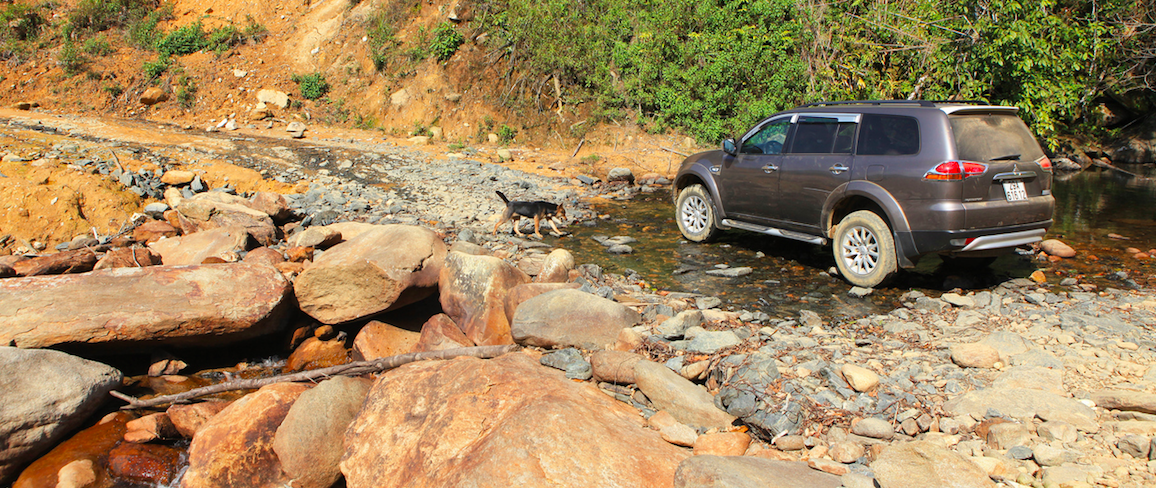Last Updated on August 3, 2025
Wondering When to Change to Winter Tires?
As the winter season approaches, one of the most critical considerations for safe driving is knowing when to change to winter tires. These specialized tires are designed to provide superior traction and handling in cold, snowy, and icy conditions, enhancing your safety on the road. To help you determine the right time to change, we’ve compiled the top five tips for when to switch to winter tires.
Why You Should Change To Winter Tires
Given their name, all-season tires are made to perform year-round in moderate weather conditions. While all-season tires provide combined benefits from summer and winter tires, they are not ideal for drivers battling extreme cold, ice, and snow during winter. Experts agree that even the best all-season tires succumb to low temperatures, which causes the tire to harden and lose a significant amount of grip. Once your tires lose grip, other safety features of your car could also lose functionality, such as all-wheel drive and anti-lock brakes. So, a winter tire will benefit you greatly if your area has regular freezing temperatures, whether with a large amount of snow or just common freezing and dry temperatures.
Winter tires could prevent a fender bender after hitting a patch of black ice or help you stop quickly on packed snow. Made with resilient rubber compounds designed to stay flexible in the cold, deep treads that quickly channel snow and slush away from the tire, and sipes intended to grab the road and packed snow, winter tires handle inclement weather for increased safety and driving on unplowed snow and slippery roads.

Below are additional benefits from switching to winter tires:
- A sense of safety and security to get where you need to go
- Increased grip ability to stop and start on a hill
- Maximize abrupt stopping power
- Capability to effectively maneuver in low temperatures, deep snow, and icy roads
When You Should Switch
This answer could vary depending on the type and brand of tire installed. A good rule of thumb is to change to winter-season tires once temperatures consistently drop below 45°F. It’s also important to consider the time of day you are driving—daily highs might read well over 50°F, but given your early morning and evening commute, temperatures could be below 45°F at those times. For those with summer tires, aim to change them once temperatures consistently drop below 50°F.
When You Should Switch Back
Conversely, come springtime, similar guidelines should be followed when switching out of winter tires. If you own a set of all-season tires, you should change them when temperatures stay above 45°F each night. Since summer tires perform best when it’s warmer, you can hold off a little longer—especially if your area typically has late freezes.
5 Tips for When to Change to Winter Tires
To ensure you follow best practices for switching in and out of winter tires, consult your local tire shop to see what they recommend based on your regional driving conditions. However, sticking to the general guideline of 45°F for all-season tires and 50°F for summer tires should increase the longevity of your tires and maximize your safety while driving.
1. Monitor Temperature Drops
A temperature drop is one of the key indicators for when to change to winter tires. As the mercury dips below seven °C (45°F), all-season and summer tires lose effectiveness. Winter tires are engineered with a unique rubber compound that remains flexible even in frigid conditions, ensuring better grip on icy roads. When you notice consistently low temperatures, it’s a clear sign that it’s time to switch.
2. Keep an Eye on Weather Forecasts
Staying informed about upcoming weather conditions is crucial for determining when to change to winter tires. Keep a close watch on weather forecasts, especially for the first snow or freezing rain signs. These weather events can create hazardous driving conditions, and having winter tires in place beforehand can make all the difference in your safety and control on the road.
3. Check Tread Depth
Tread depth is a critical factor in tire performance. For winter tires, a deeper tread is essential for proper traction. Check the tread depth on your existing tires regularly. If it’s worn down to approximately 6/32 of an inch or 4.8 millimeters, it’s time to consider changing to winter tires. Tires with adequate tread depth can effectively grip snow and ice, providing the needed stability.
4. Plan for the First Snowfall
The first snowfall of the season often catches drivers off guard. Plan and change to winter tires before the snow arrives to avoid the rush and potential safety risks. It’s advisable to make the switch when you have a comfortable margin of safety to prepare you for the inevitable winter weather.
5. Consult Your Local Regulations
Lastly, it’s essential to be aware of local regulations and requirements regarding winter tires. Some regions have specific laws that mandate the use of winter tires during cold months or in designated winter tire zones. Failing to comply with these regulations can result in fines and penalties. Check with your local authorities to ensure you comply and make the necessary tire changes accordingly.

Conclusion
In conclusion, knowing when to change to winter tires is vital to safe winter driving. By monitoring temperature drops, staying updated on weather forecasts, checking tread depth, planning, and adhering to local regulations, you can ensure your vehicle is equipped with the right tires at the right time. This proactive approach enhances your safety, control, and peace of mind during the challenging winter. Don’t wait until the first snowfall – be prepared and switch to winter tires in advance.
You can find a wide selection of winter tires from popular brands on Tire Easy. Read also about the new Cooper Evolution winter tire line, another great option for your car’s safety in the wintertime.
FAQs
When Should You Switch to Winter Tires?
Switch to winter tires when temperatures consistently drop below seven °C (45°F) for enhanced cold-weather traction.
Why Is It Important to Change to Winter Tires?
Changing to winter tires is crucial for safety, as they offer superior traction on snow and ice, comply with legal requirements in some areas, and extend the lifespan of all-season tires.
How Are Winter Tires Better?
Winter tires excel in winter conditions due to their unique tread, softer rubber compound, deeper tread, and enhanced safety features.
How to Choose Winter Tires?
To choose winter tires, consider factors like tire size, performance category, budget, and driving needs, consulting experts or vehicle manufacturer recommendations for guidance.
-
Automotive Specialist
-
Proofreader
-
Writer









